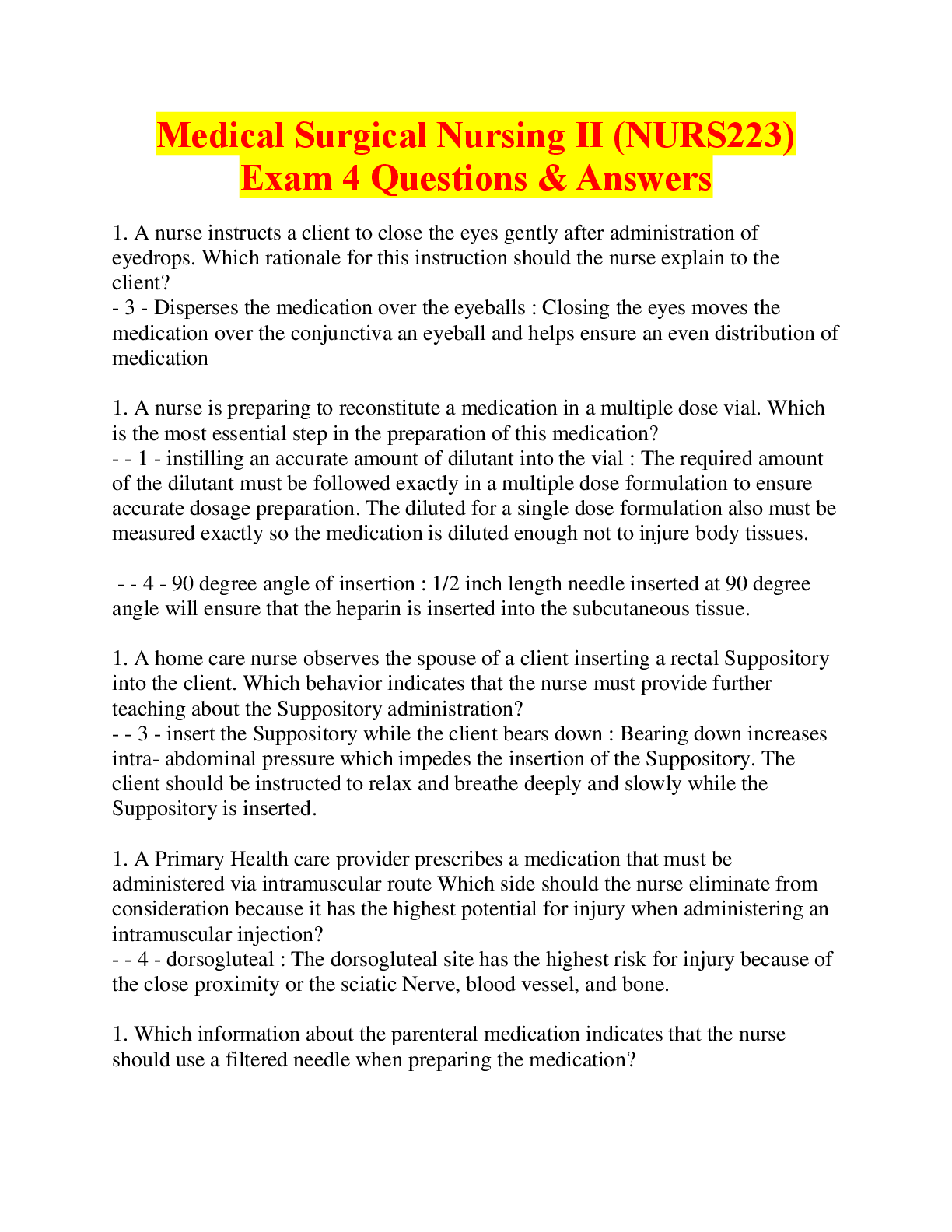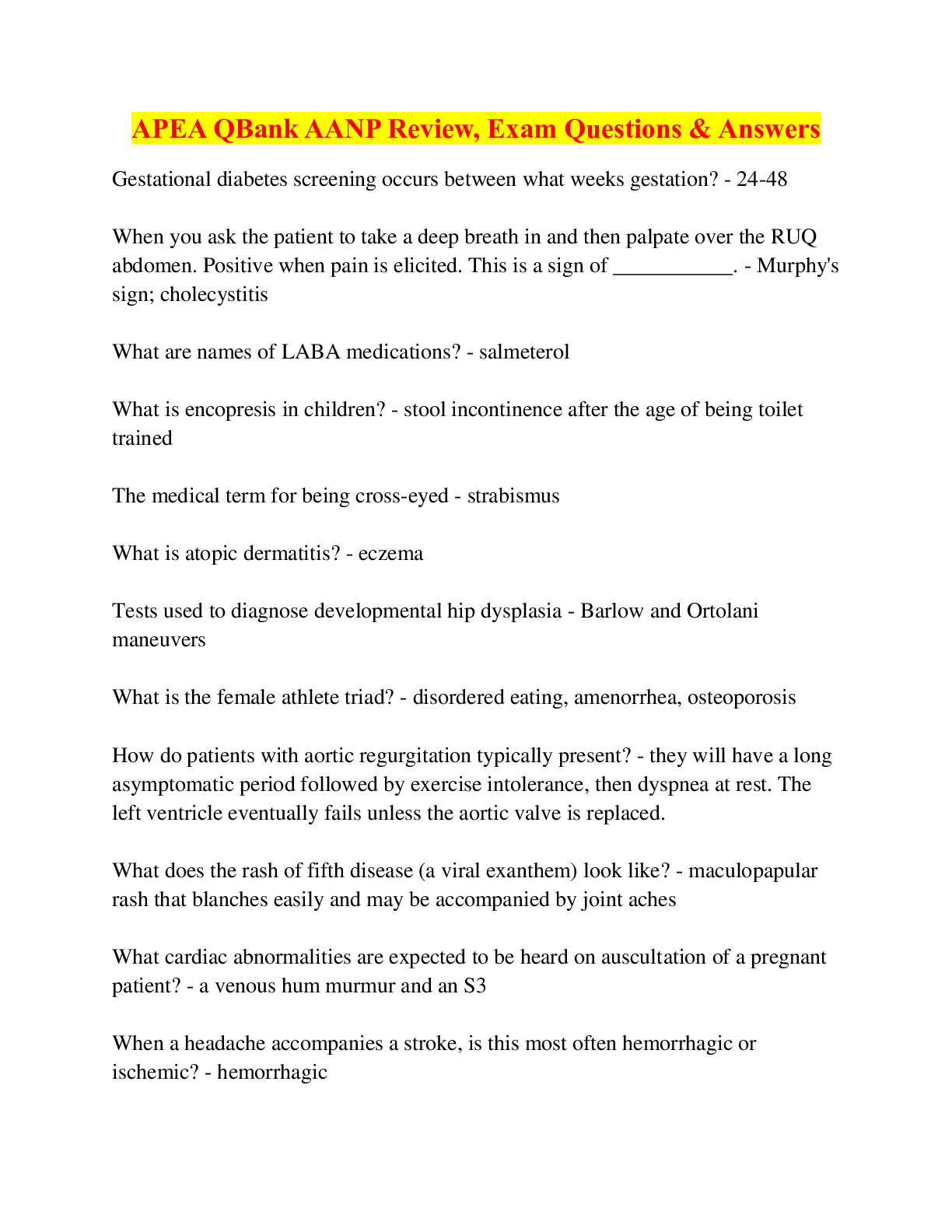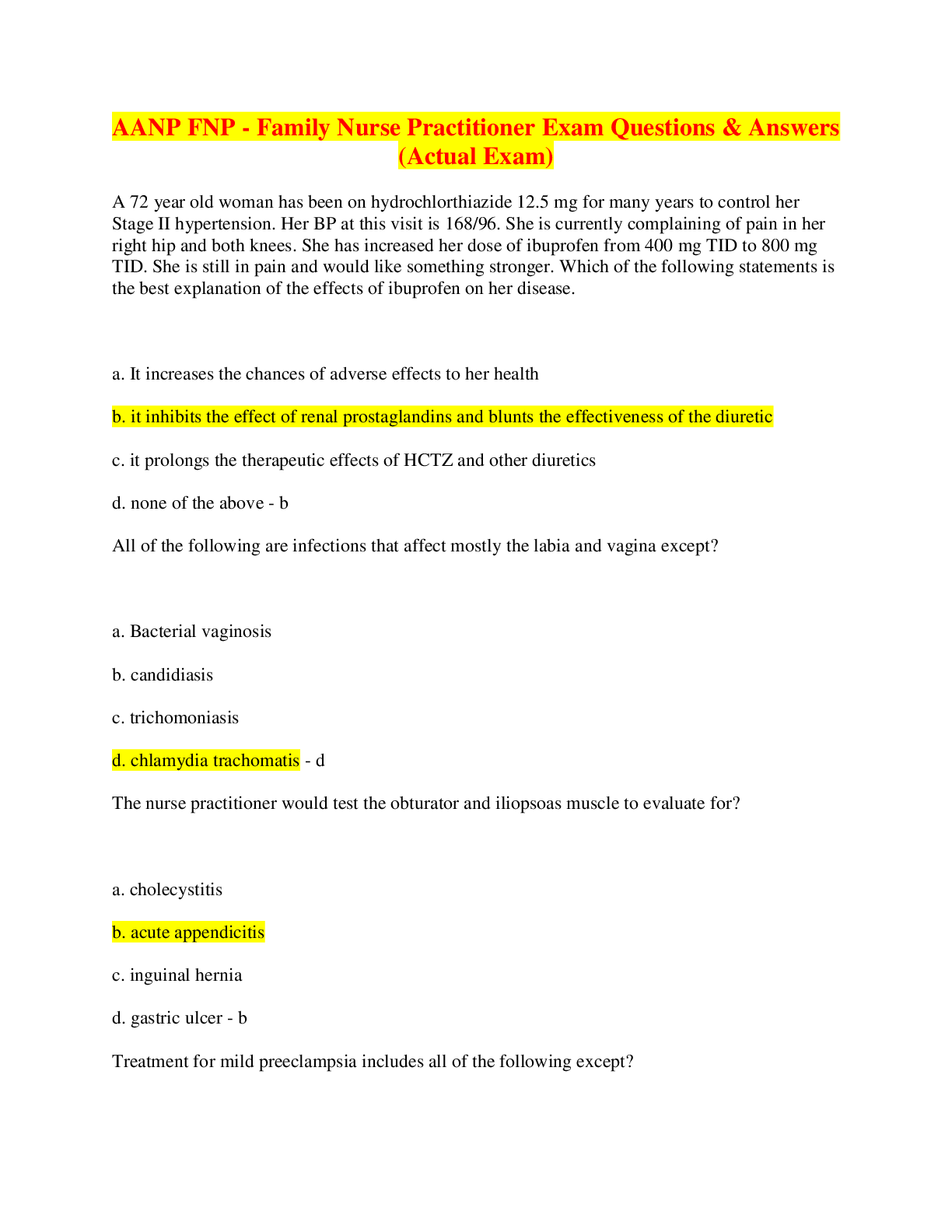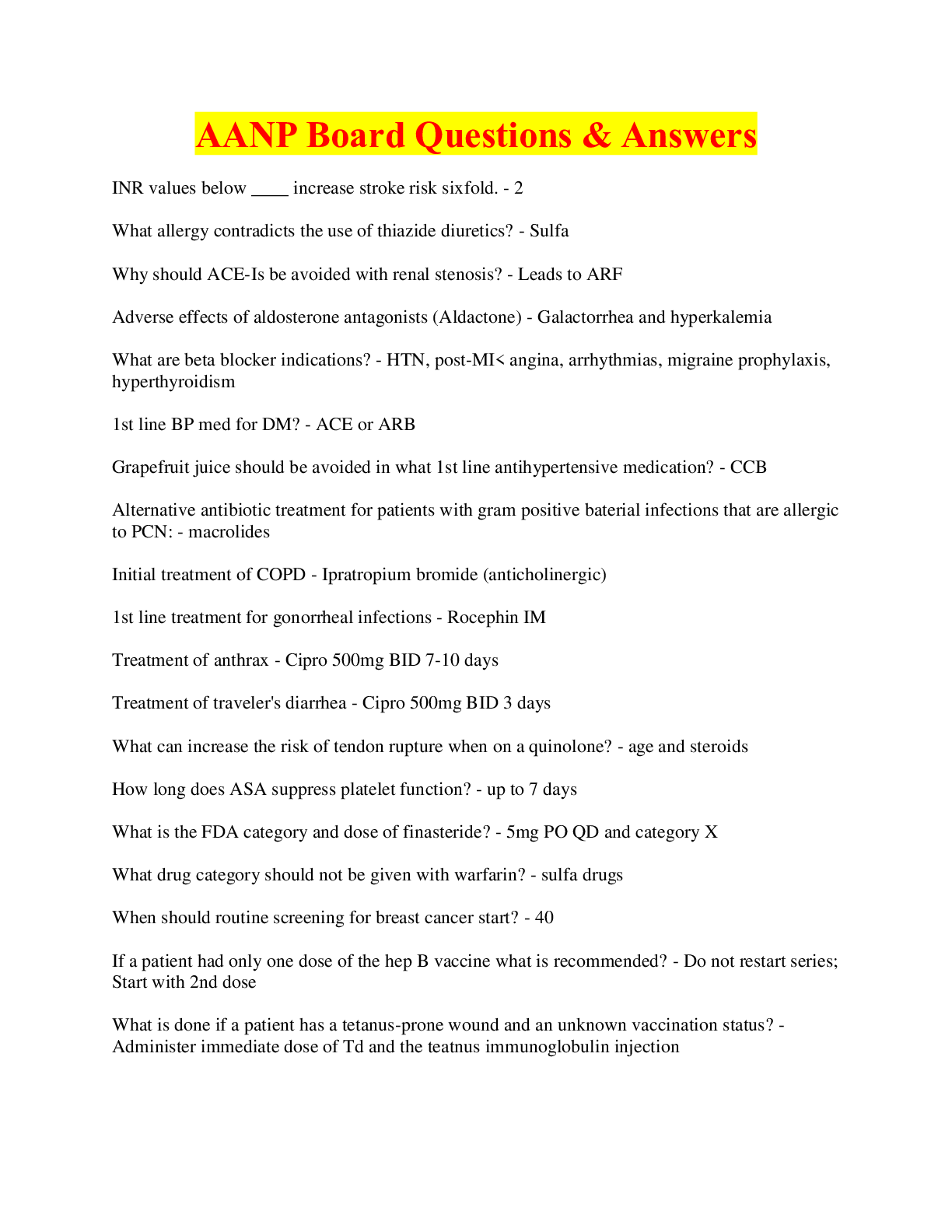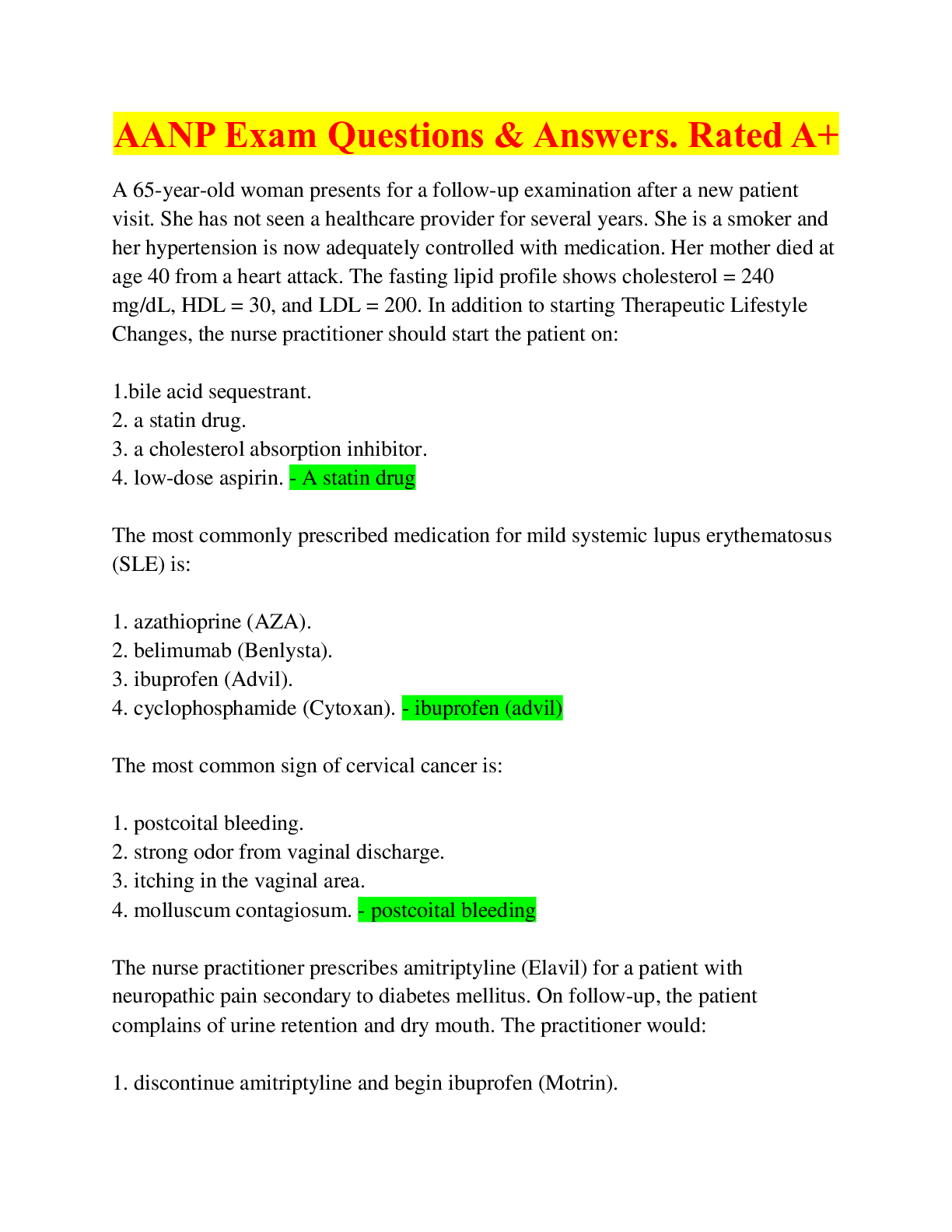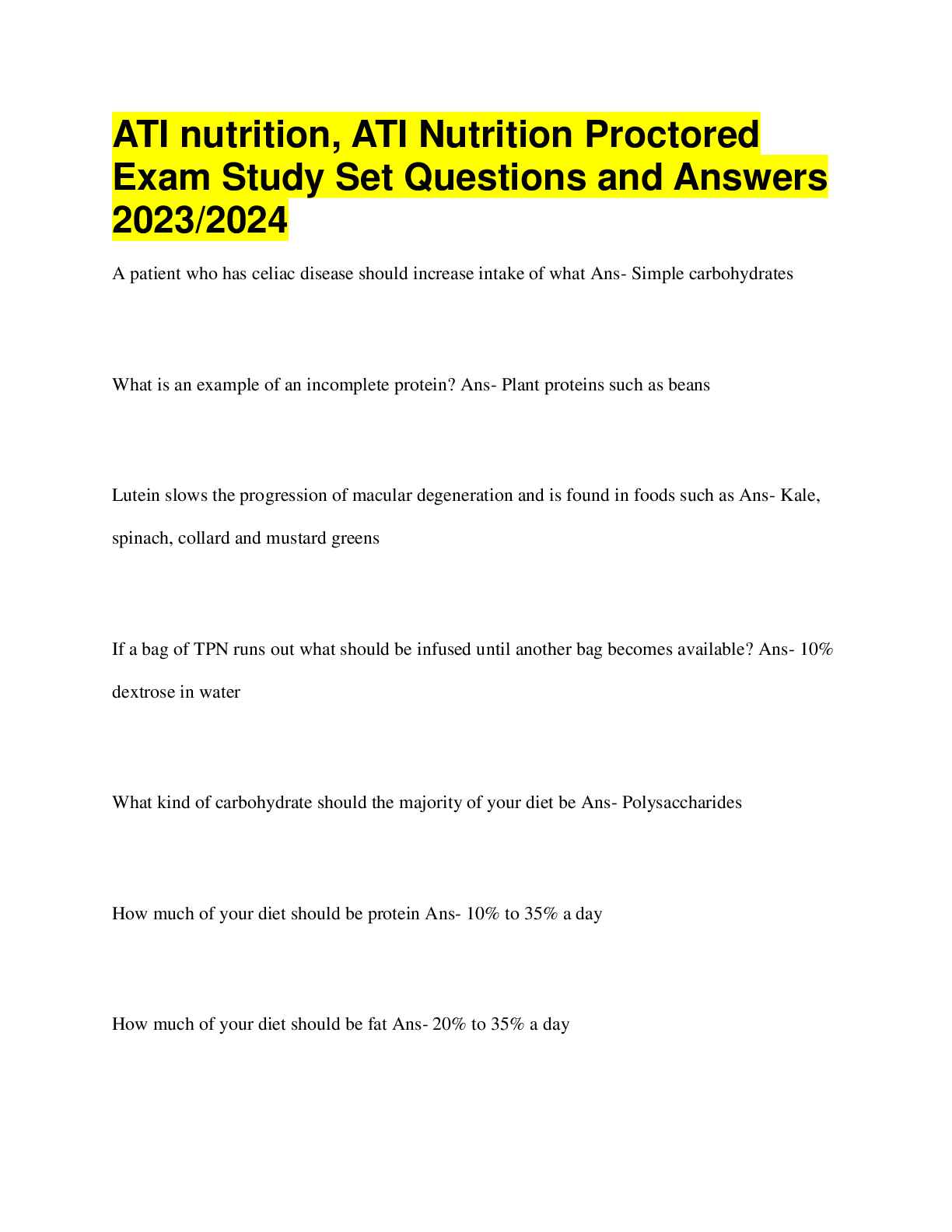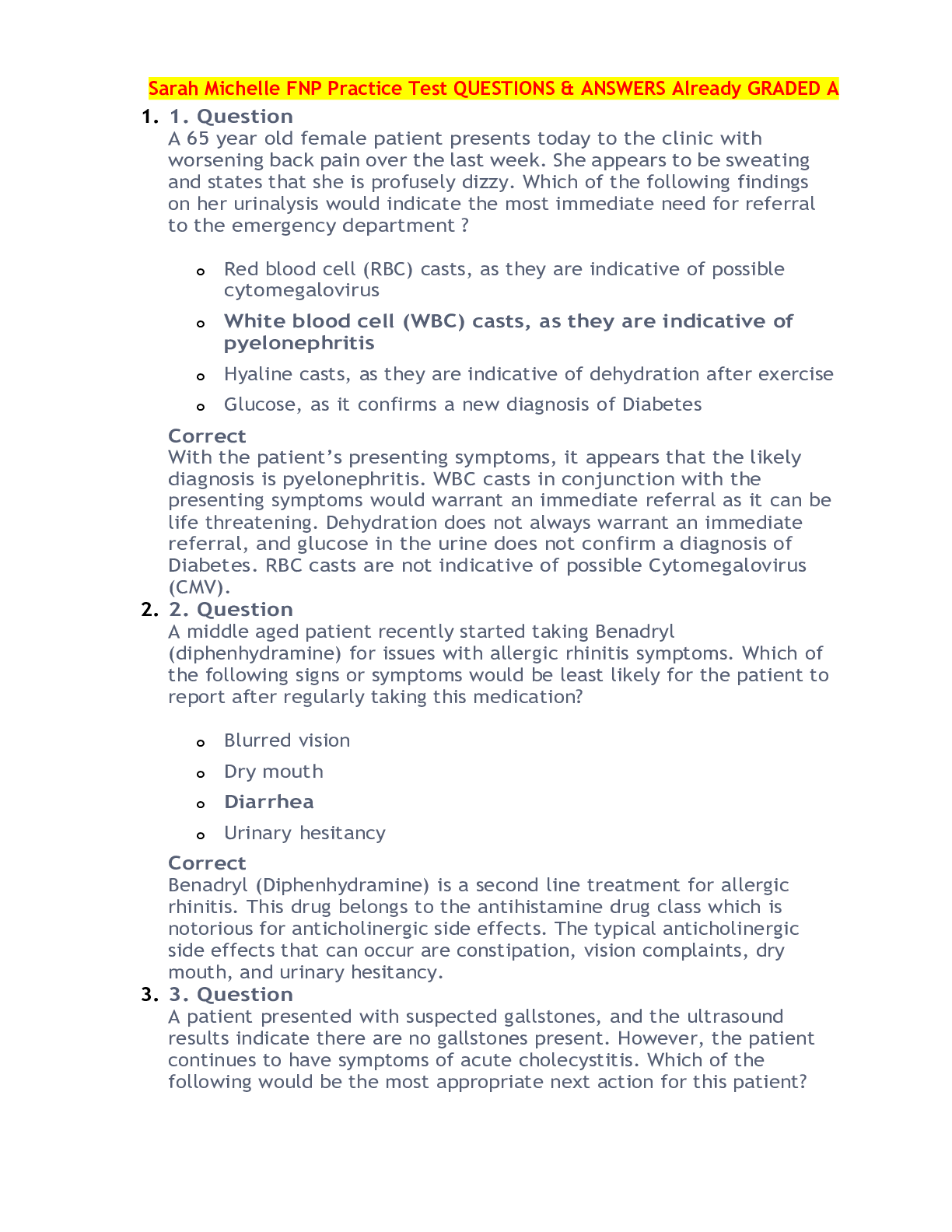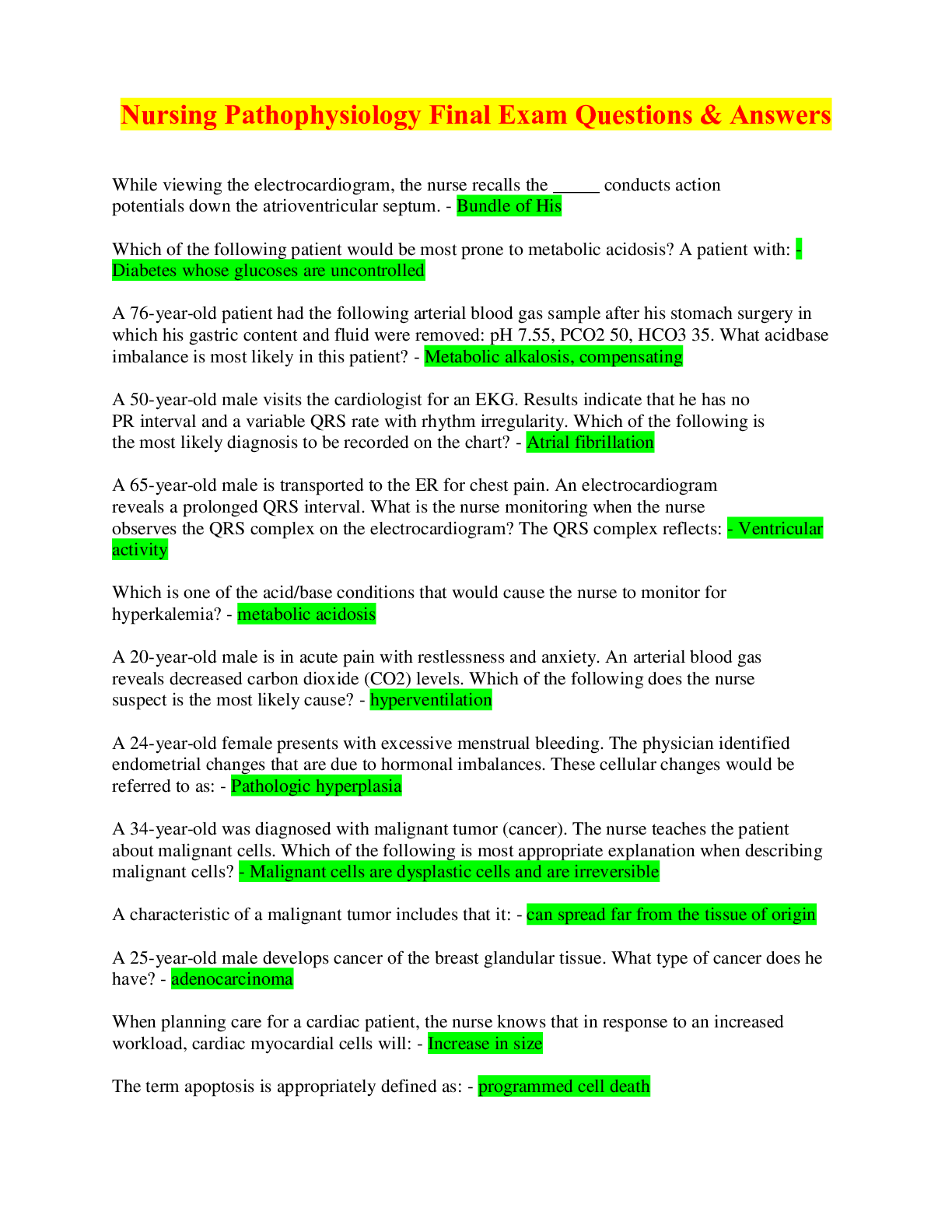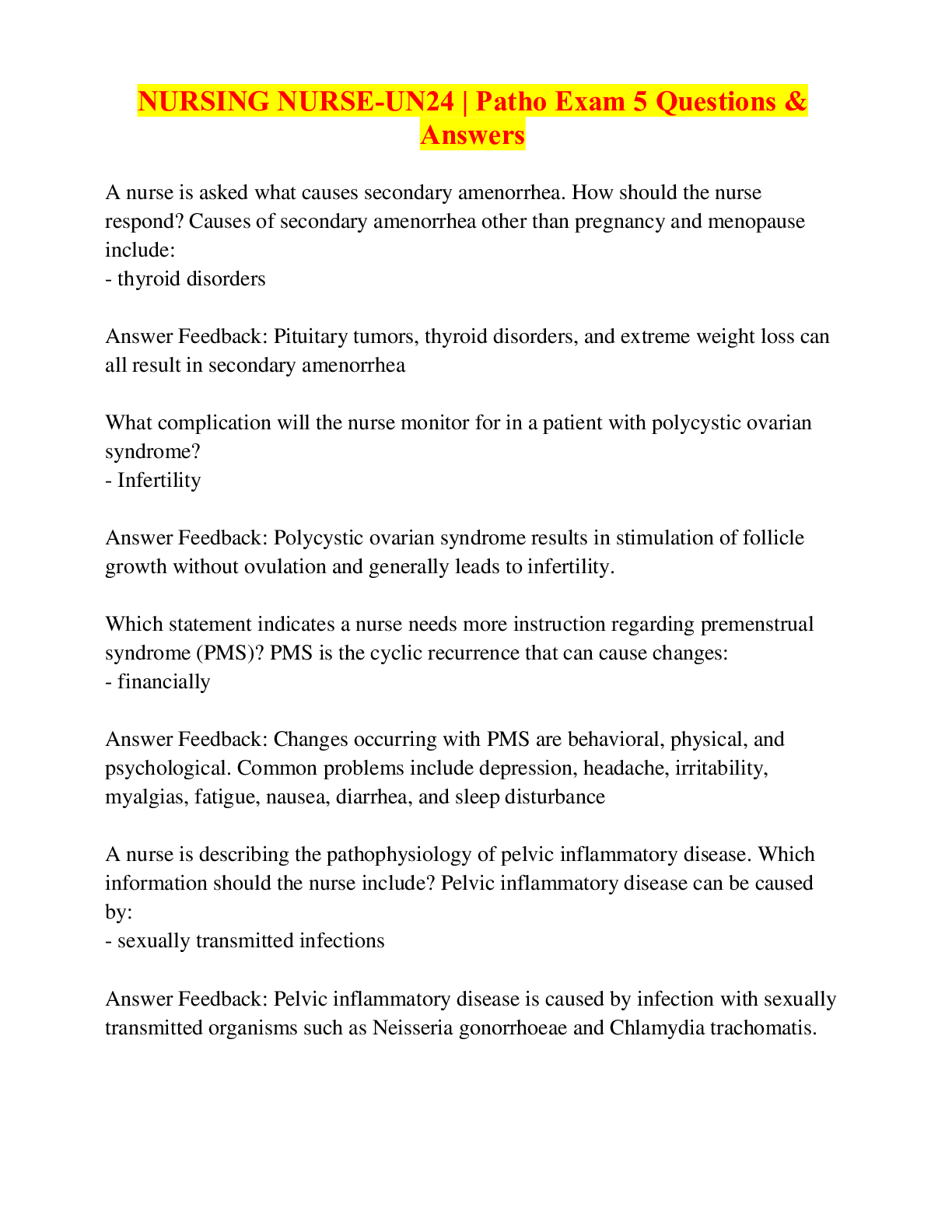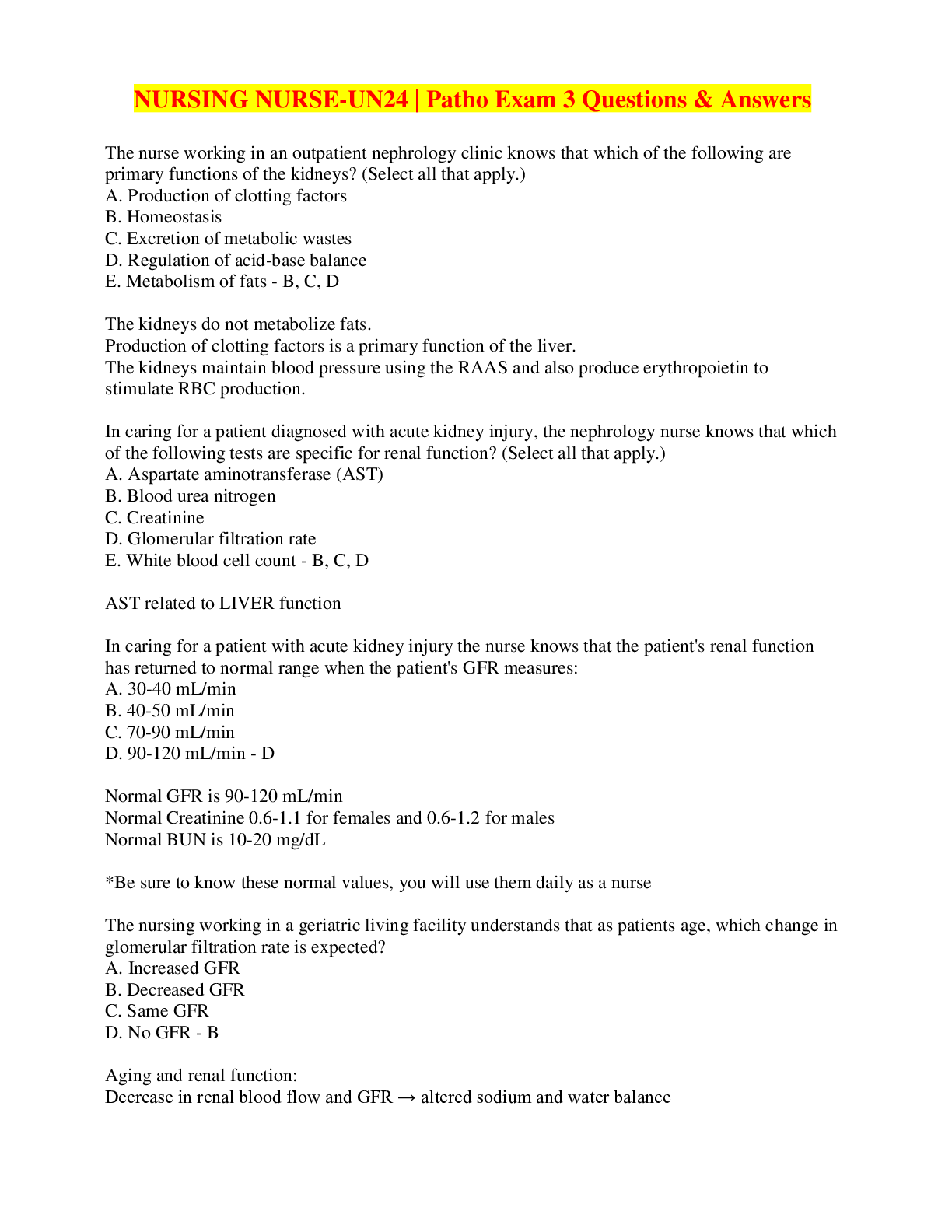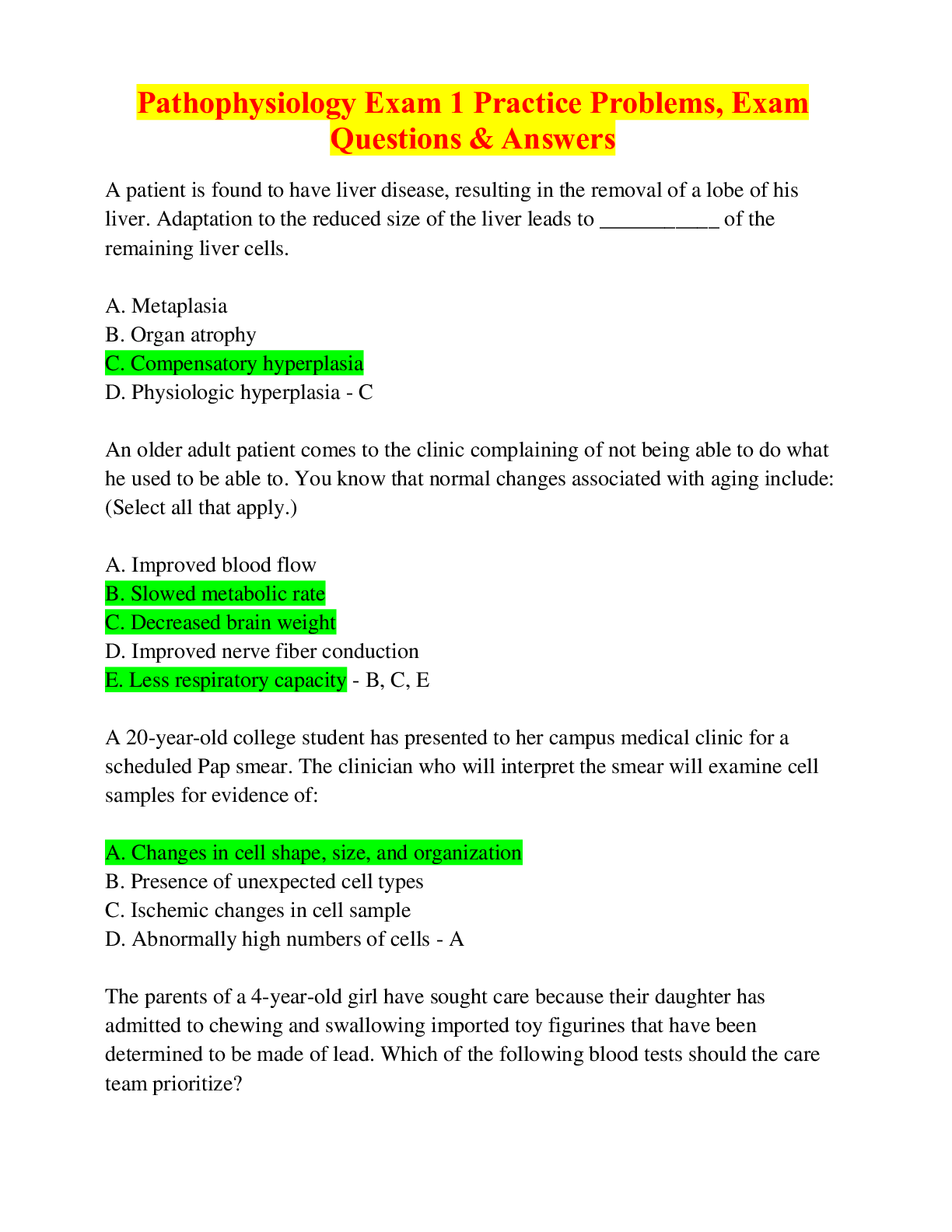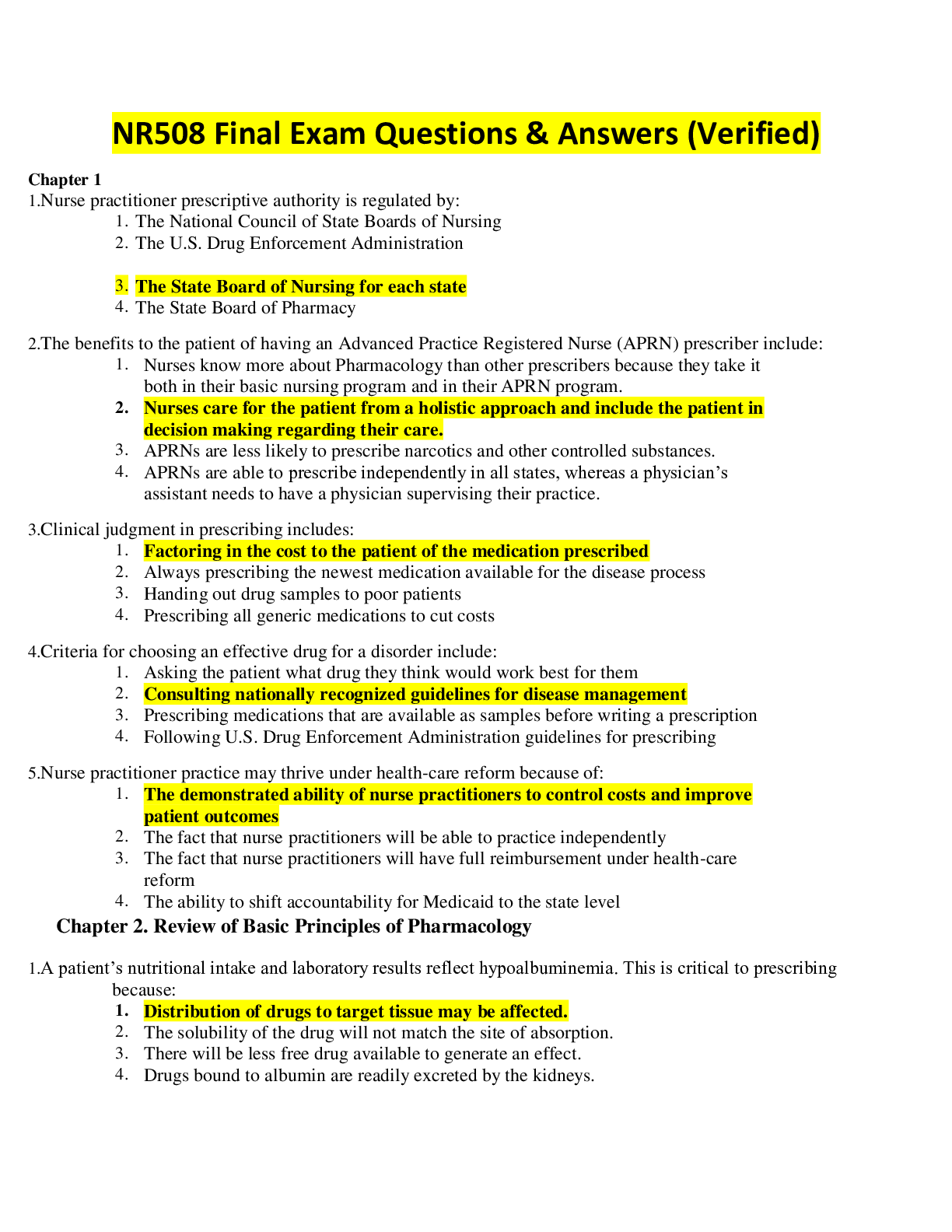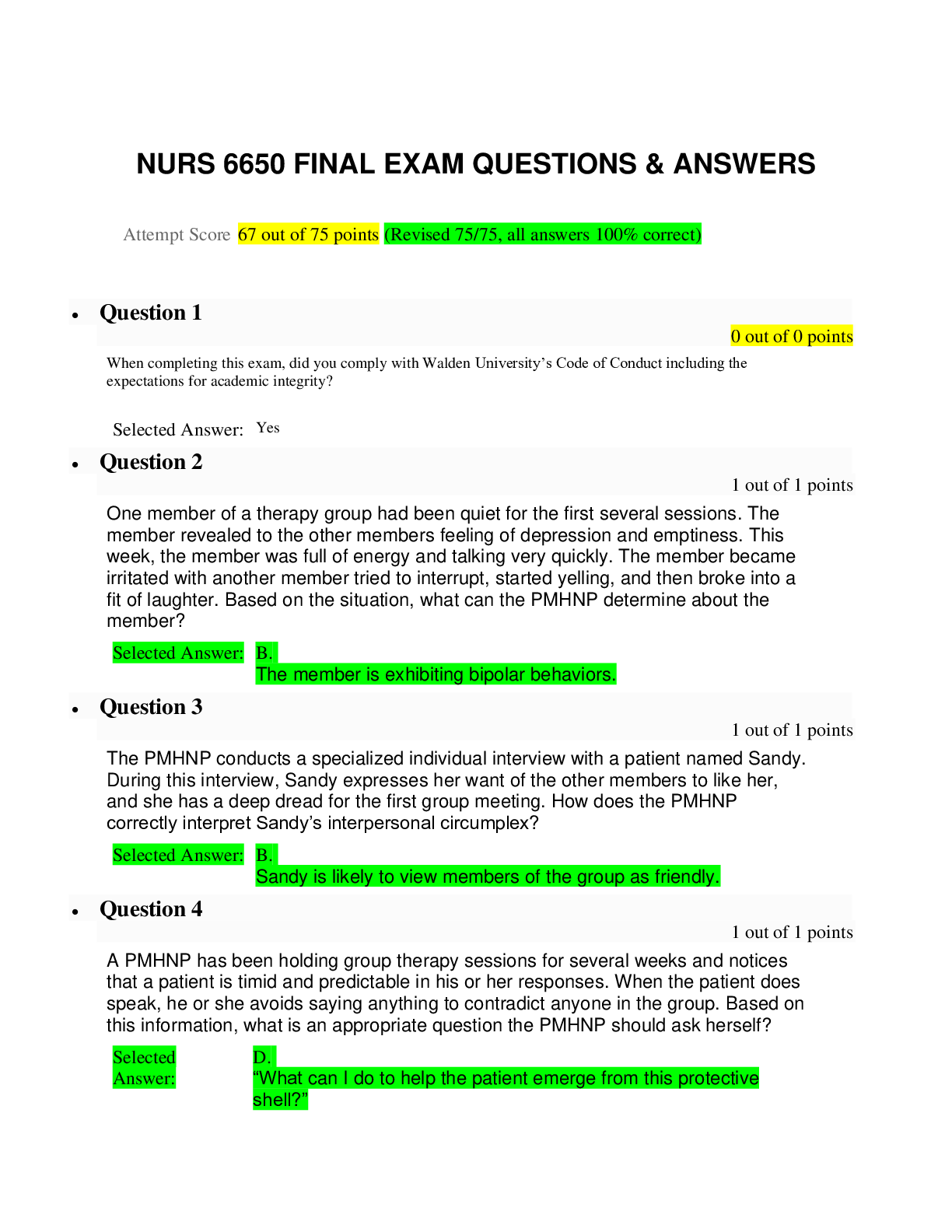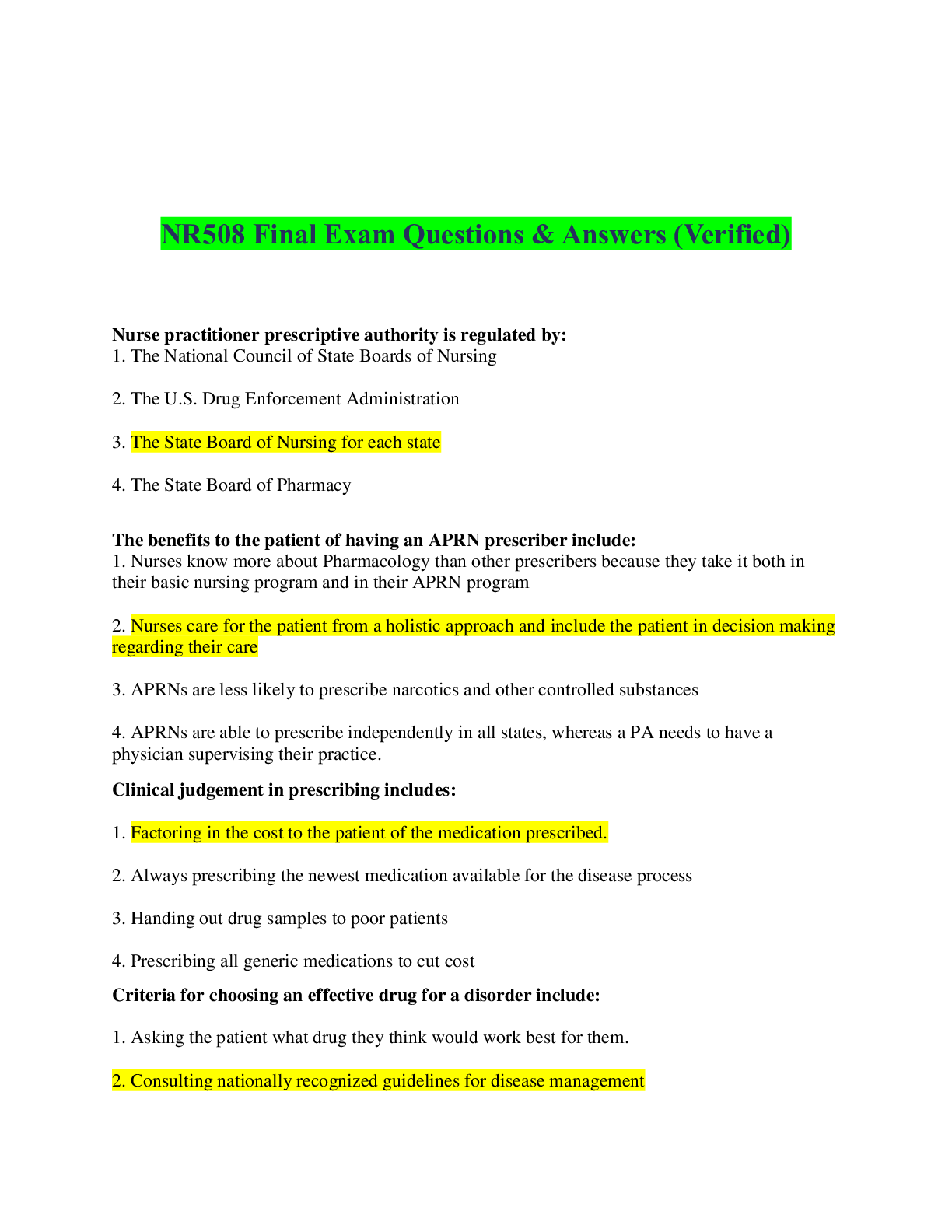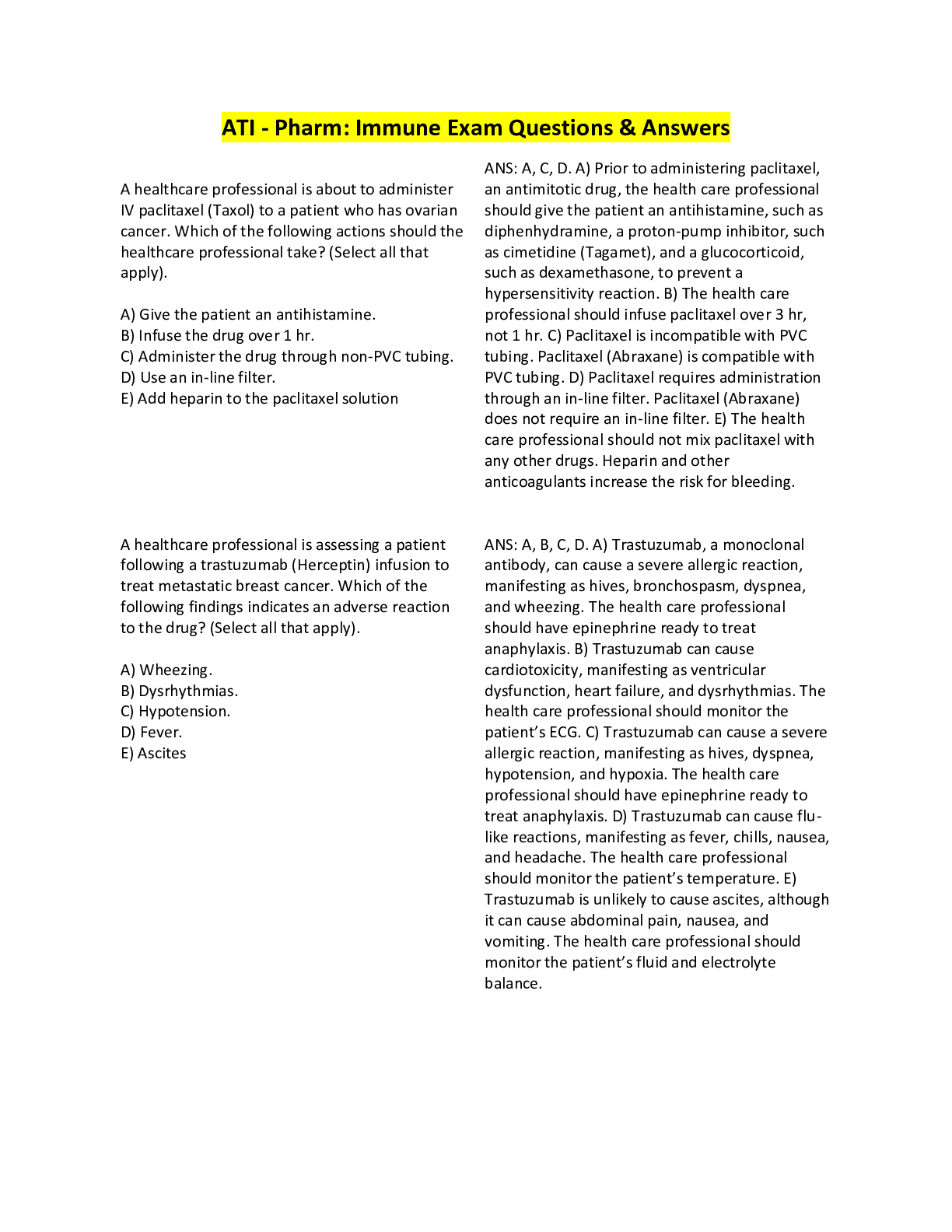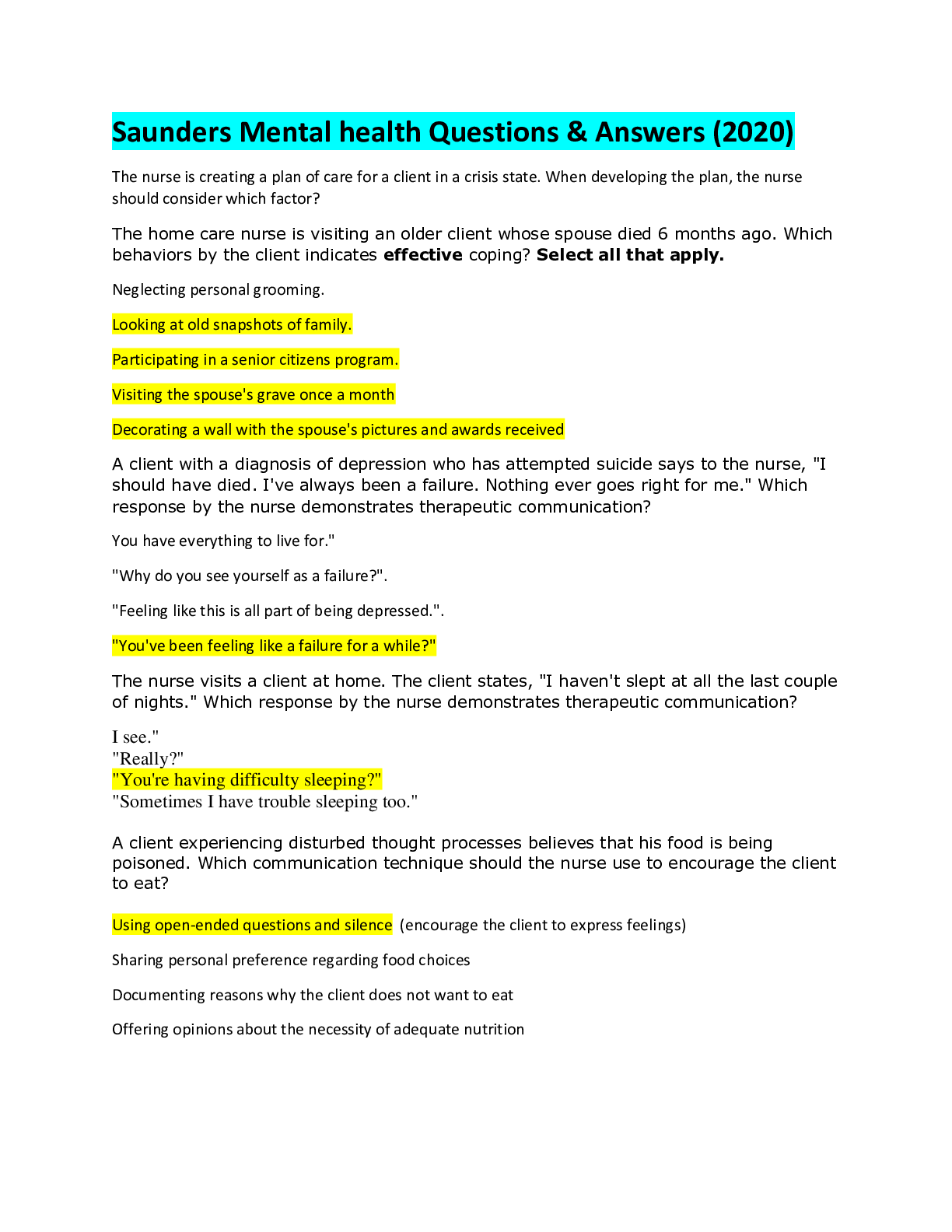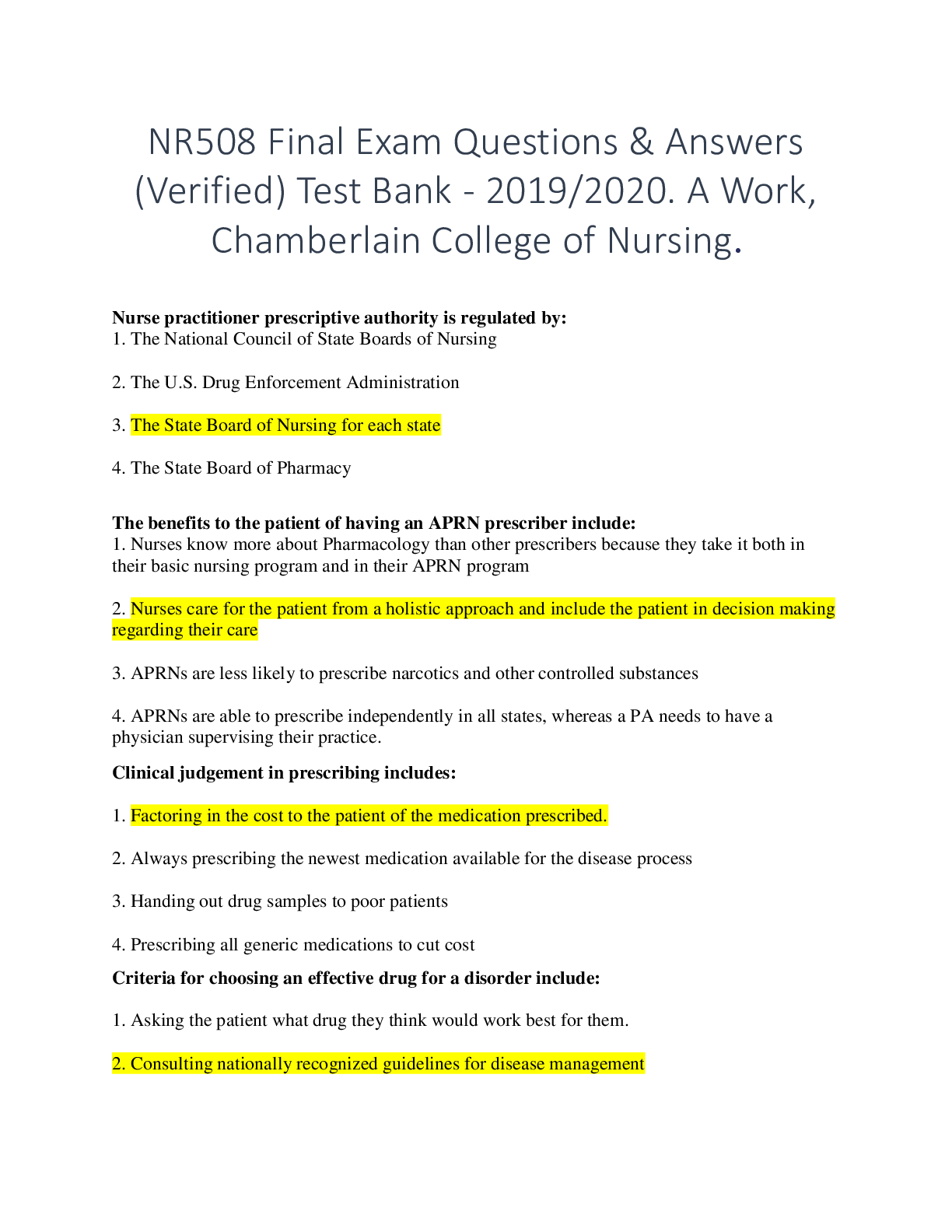Concepts Unit 6 – ATI Exam Questions & Answers With Rationales
Document Content and Description Below
Concepts Unit 6 – ATI Exam Questions & Answers With Rationales-A nurse is reinforcing teaching about cast care to a school-age child following application of a fiberglass cast for a radius fracture.... Which of the following statements by the child indicates an understanding of the teaching? 1 - "I can put an ice pack on the areas of my cast that itch." 2 - "I can let my arm hang down for 1 hour at a time every 4 hours." 3 - "I should expect some tingling in my fingertips the first few days." 4 - "I should expect the cast to be dry in 2 days." - 1 - "I can put an ice pack on the areas of my cast that itch." Rationale 1 - An ice pack placed over areas of the cast that itch can help alleviate this problem. The child may also use a blow dryer on the cool setting to blow into the cast to help with itching. 2 - The child should keep the injured extremity elevated as often as possible to prevent swelling and pain. The child should not allow the affected limb to hang in a dependent position longer than 30 min. 3 - Tingling in the child's fingertips can indicate paresthesia. Paresthesia is a possible sign of compartment syndrome and should be reported to the child's provider immediately. 4 - Fiberglass casts dry within a few minutes following application. A plaster cast can take 24 to 48 hr to dry. A nurse is reinforcing teaching with the mother of a 2-month-old infant whose provider applied a Pavlik harness 1 week earlier for the treatment of developmental hip dysplasia. Which of the following statements by the mother indicated an understanding of the teaching? 1 - "I will adjust the harness straps every day." 2 - "I will place the diaper over the harness." 3 - "I will check my baby's skin three times each day." 4 - "I will gently massage lotion on his skin around the harness clasps." - 3 - "I will check my baby's skin three times each day." Rationale 1 - The mother should only adjust the straps with medical supervision. 2 - The mother should always place the diaper under the harness. 3 - The mother should check the infant's skin under the straps and at skin folds for irritation and skin breakdown two to three times per day. 4 - Lotions and powders on the skin can build up and irritate the skin. A nurse is collecting data on a client who has a femur fracture. Which of the following findings is a manifestation of fat embolism syndrome? 1 - Reduced pulses distal to the client's fracture 2 - Petechiae over the client's chest 3 - A drop in the client's temperature 4 - Swelling below the client's injury - 2 - Petechiae over the client's chest Rationale 1 - A client who has impaired circulation can have reduced peripheral pulses; however, this is not a manifestation of fat embolism syndrome. 2 - A client who has fat embolism syndrome can develop petechiae over the chest arms, neck, and abdomen. Other manifestations include change in mental status, dyspnea, tachypnea, and tachycardia. This develops due to inadequate arterial oxygen from fat globules blocking small arteries that provide oxygen to various organs. 3 - Hyperthermia, not hypothermia, is a manifestation of fat embolism syndrome. 4 - A client who has impaired circulation can have swelling below the injury; however, this is not a manifestation of fat embolism syndrome. A nurse is reinforcing teaching about Russell's traction with a newly licensed nurse. Which of the following statements should the nurse make? 1 - "Russell's traction uses a sling under the knee to treat a fracture of the femur." 2 - "Russell's traction uses a cervical halter to decrease cervical muscle spasms." 3 - "Russell's traction uses a pelvic girdle belt to decrease lower back pain." 4 - "Russell's traction uses skeletal pins to stabilize the fracture." - 1 - "Russell's traction uses a sling under the knee to treat a fracture of the femur." Rationale 1 - Russell's traction is a type of skin traction which incorporates a sling under the knee that is connected by a rope to an overhead bar pulley. 2 - Spinal column traction uses a cervical halter. 3 - Pelvic traction uses a pelvic belt. 4 - Skeletal traction uses sk [Show More]
Last updated: 2 years ago
Preview 1 out of 55 pages

Buy this document to get the full access instantly
Instant Download Access after purchase
Buy NowInstant download
We Accept:

Reviews( 0 )
$13.50
Can't find what you want? Try our AI powered Search
Document information
Connected school, study & course
About the document
Uploaded On
Feb 27, 2023
Number of pages
55
Written in
Additional information
This document has been written for:
Uploaded
Feb 27, 2023
Downloads
0
Views
91

